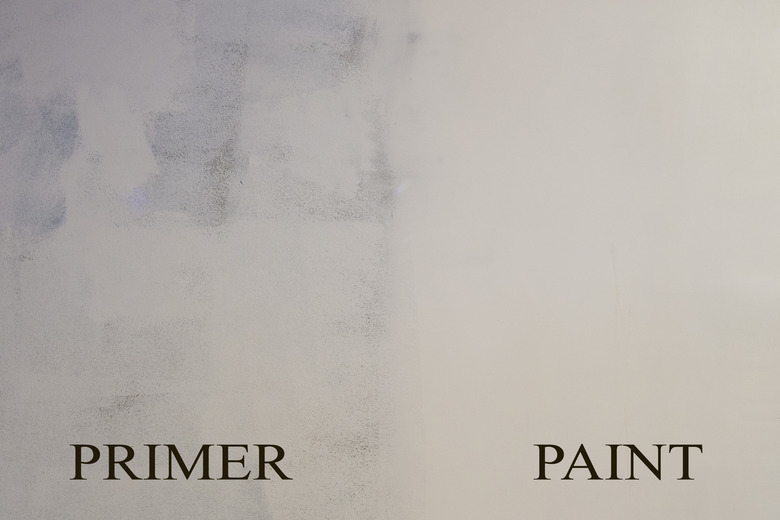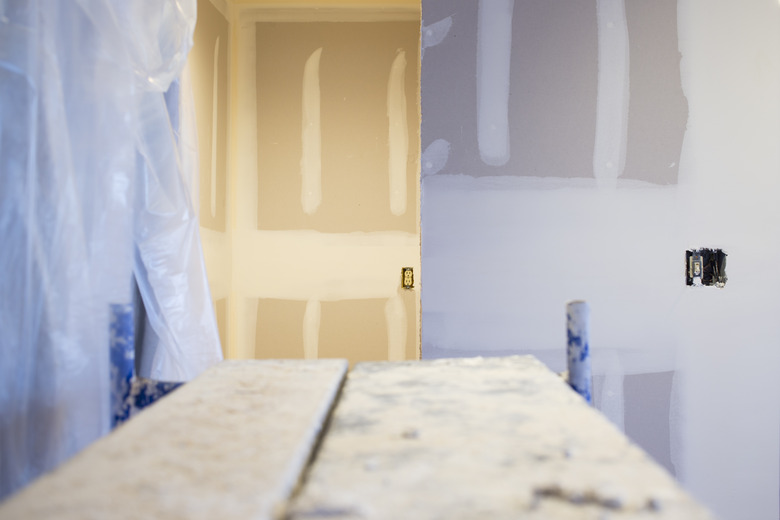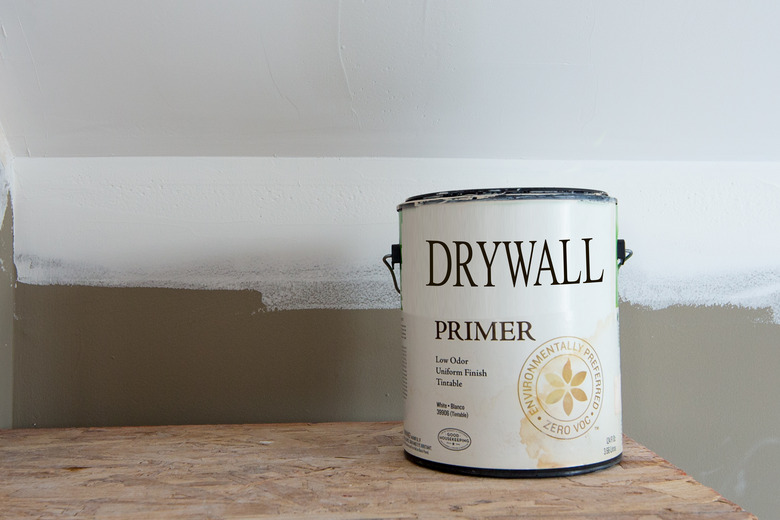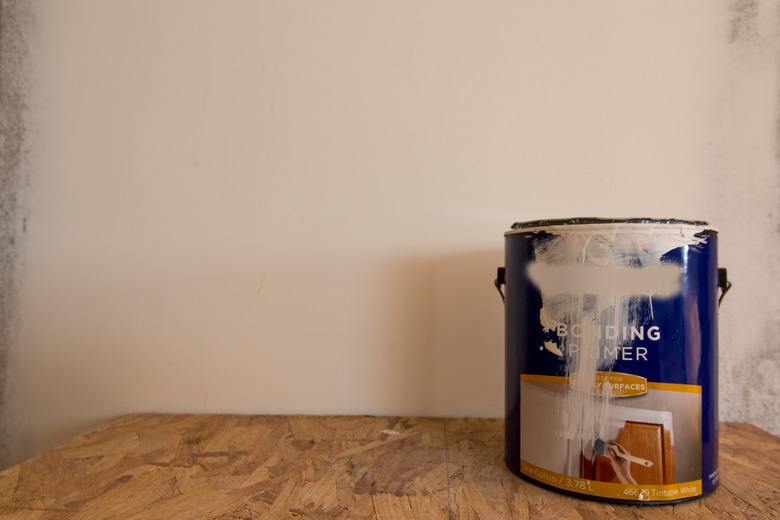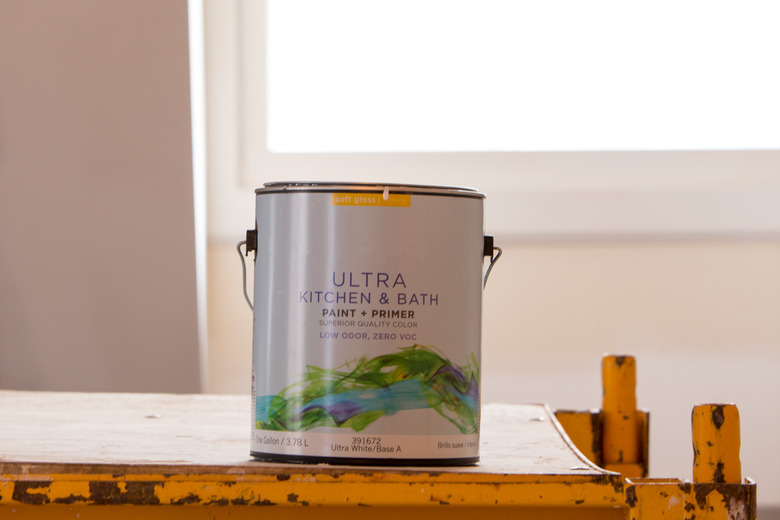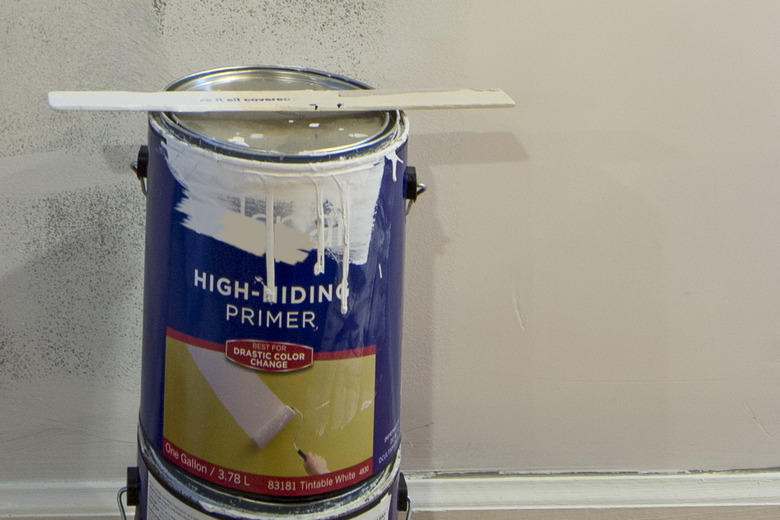Drywall Sealer Vs. Primer
A primer or sealer or a primer-sealer is essential when preparing new drywall for paint or wallpaper. Once the drywall has gone up, the joints taped and the screws mudded, something is needed to create an even, solid surface over those different textures for a smooth coat of paint, and possibly to help blend in new drywall with an existing wall. A primer-sealer is usually that product.
New Drywall
New Drywall
A new wall of made of drywall consists of the exposed finish-side drywall paper and the joint compound that covers seams and fasteners. The surface paper and the joint compound each have different textures, so even though both are highly porous, they absorb paint at different rates, resulting in an uneven finish, especially with glossier paint sheen. The importance of a primer or sealer is to create an even surface for your paint or wall covering.
Primers
Primers
Primers create a flat-sheen surface that new paint can bond easily to. Primers are an intermediary coat between an unfinished or previously painted surface and new paint. Most primers are similar to paints in that they contain mostly fillers and pigments. They will create a coarse, flat surface for new paint to adhere to, but do not have enough binders or resins to truly fill out the difference in texture between the joint compound and the drywall paper meaning that even if you use a primer, you may still see an uneven finish in your paint. One advantage of primer is that many are able to be tinted, which is especially helpful when painting dark colors. A dark tinted primer will mean fewer coats of finish paint to achieve the deep color desired.
Sealers
Sealers
Sealers are meant to seal the pores of the surfaces to which they are applied, meaning that they have more binders and resins in them to fill the microscopic pores of different materials and textures, creating a uniform, flat surface. Sealers can be clear or pigmented, and certain sealers are not meant to be topcoated. If choosing a sealer for new drywall, check that it is able to be painted over. Pigmented sealers have the added advantage of helping to hide any discoloration the wall may have.
Wallpaper or Paint
Wallpaper or Paint
Whether you are painting or wallpapering your new wall dictates the product you will choose. Wallpaper is put up with adhesives that you don't want to soak into the surface paper of the drywall, so putting up an appropriate primer or sealer is a must. Certain primers and sealers are formulated for use under wallpaper to help adhesion of the glue, where paint primers are designed to improve adhesion of paint.
Primer-Sealers
Primer-Sealers
The terms primer, sealer and primer-sealer are often used interchangeably, but they are very different products. There are products however, which are primers and sealers in one, called primer-sealers. They do the job of both sealing the new drywall and evening out the different textures between the drywall paper and joint compound, as well as creating an excellent surface for new paint to adhere to. They can also be used over existing walls, and the drastic colors existing walls may be, so that the new drywall blends in with the existing walls. In many situations, it is advisable to choose a primer-sealer combo, so that any issues the wall may present will be accounted for. Most primer-sealers are excellent under wallpaper and can be tinted to a similar shade as the topcoat paint so that less paint coats are needed.
